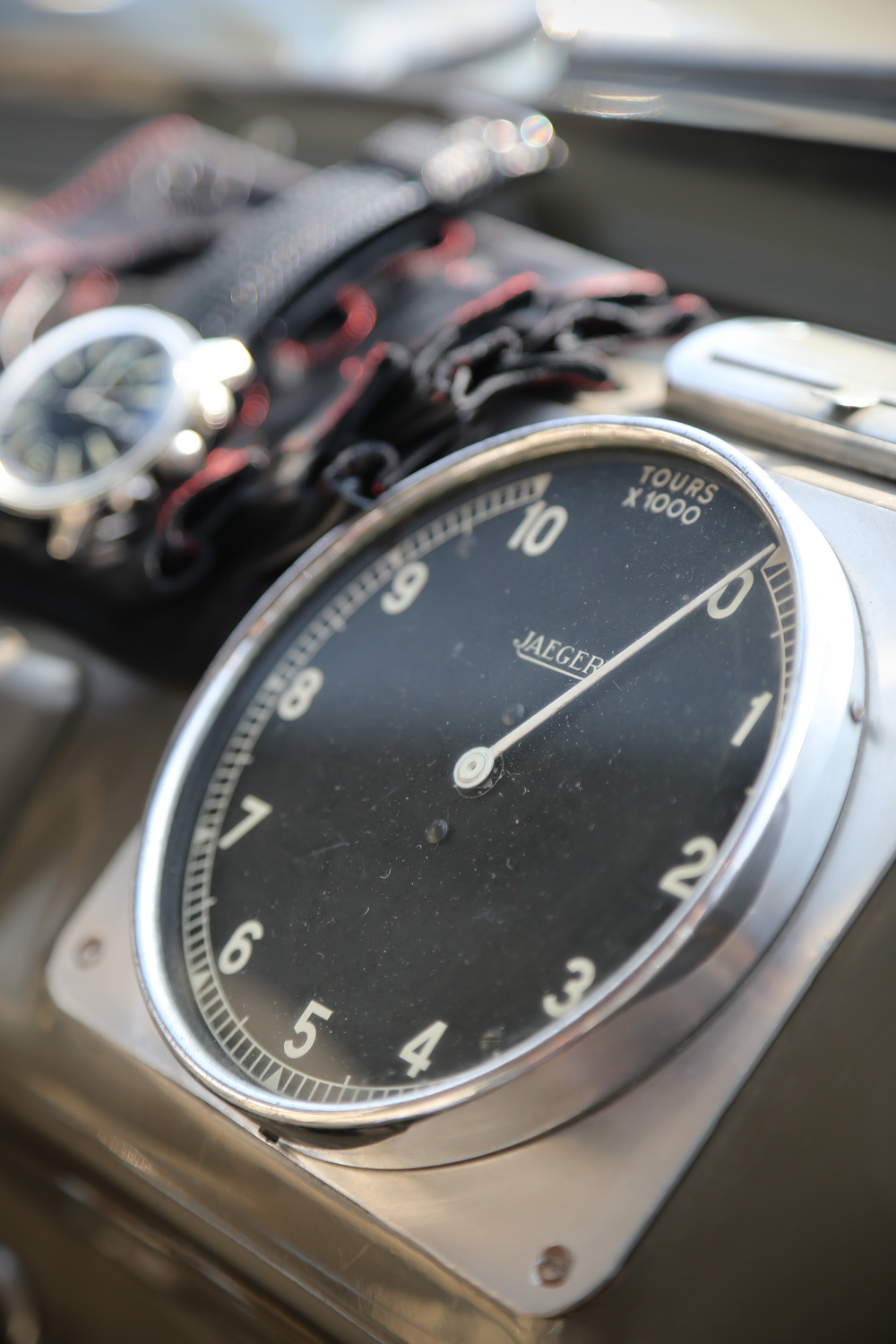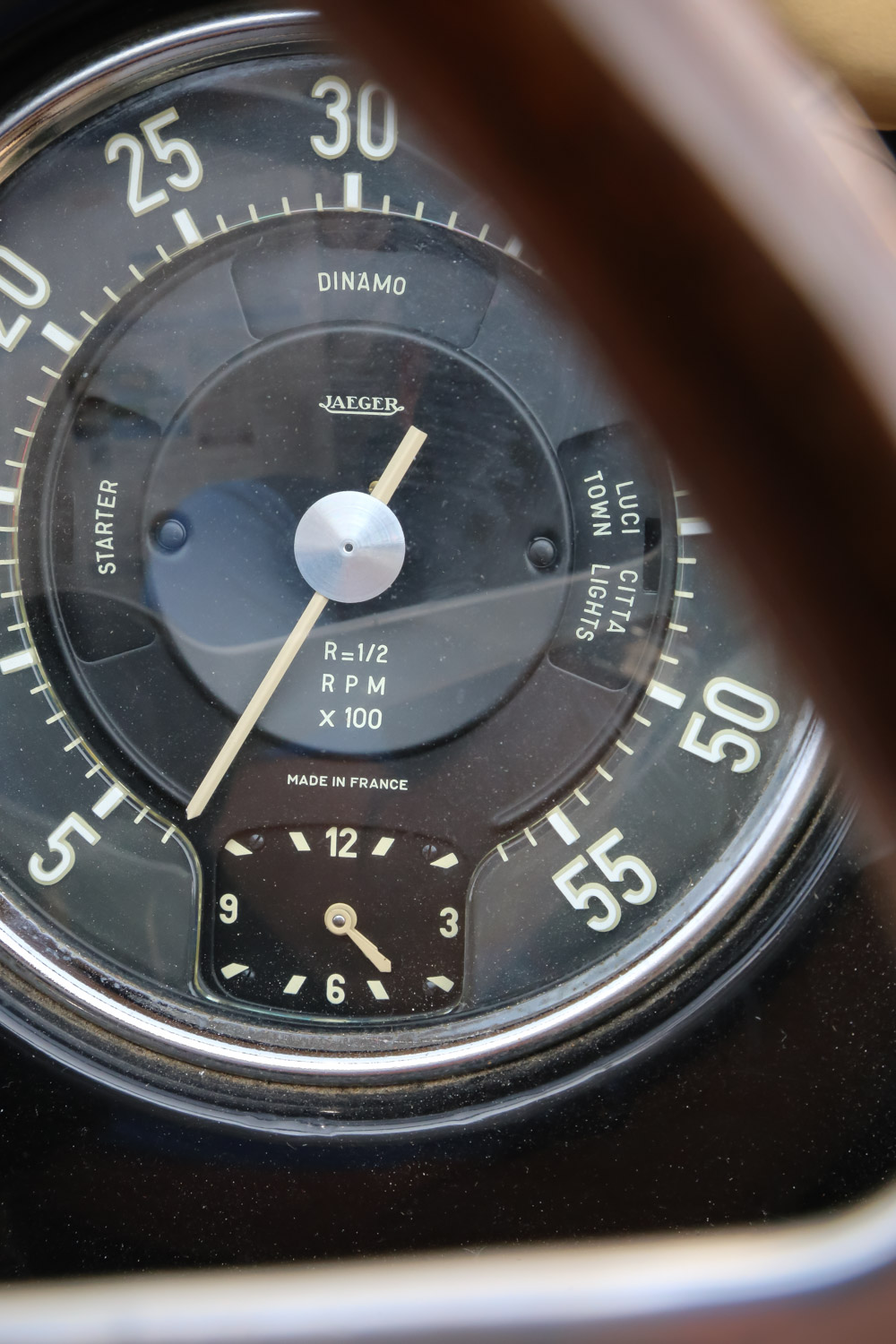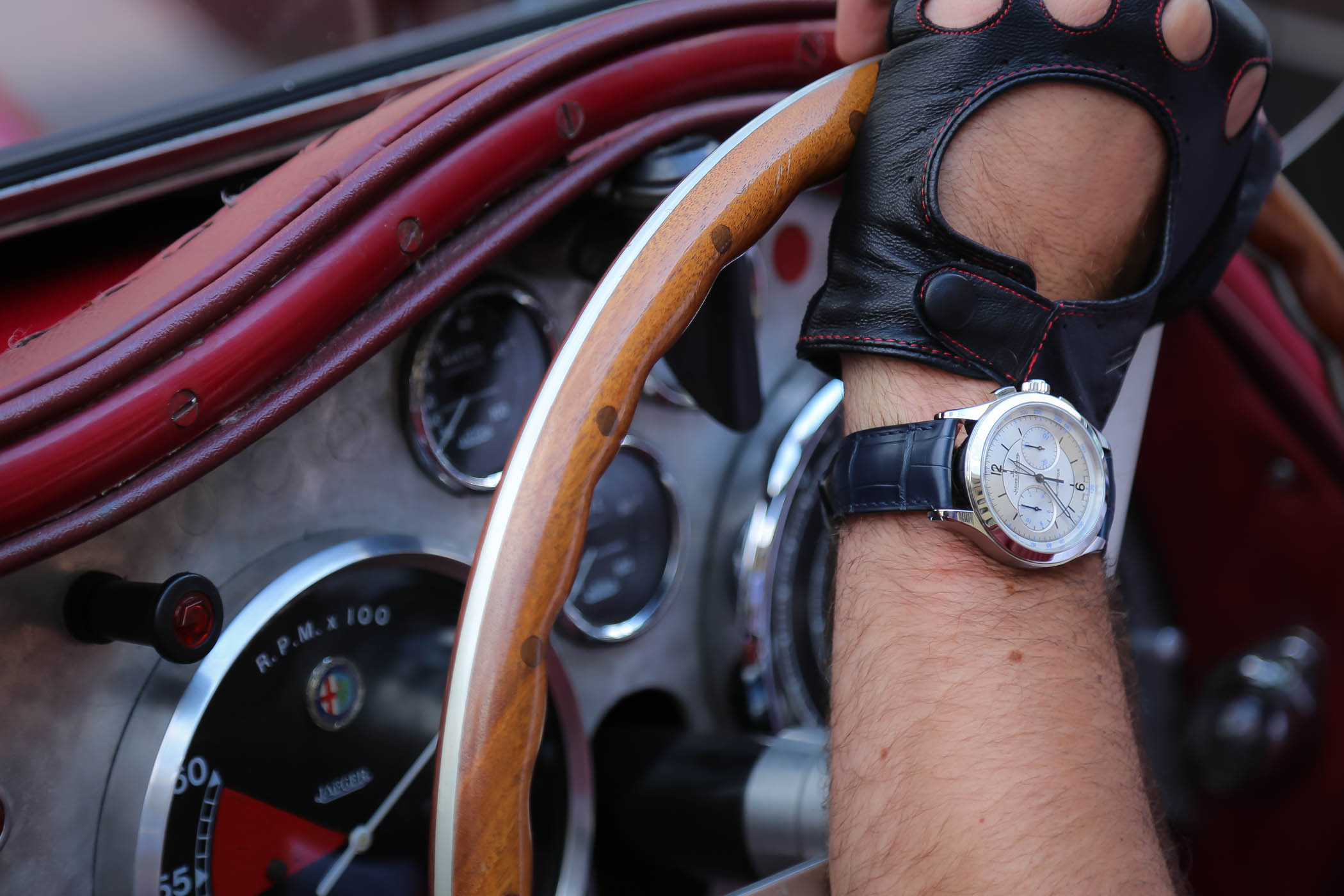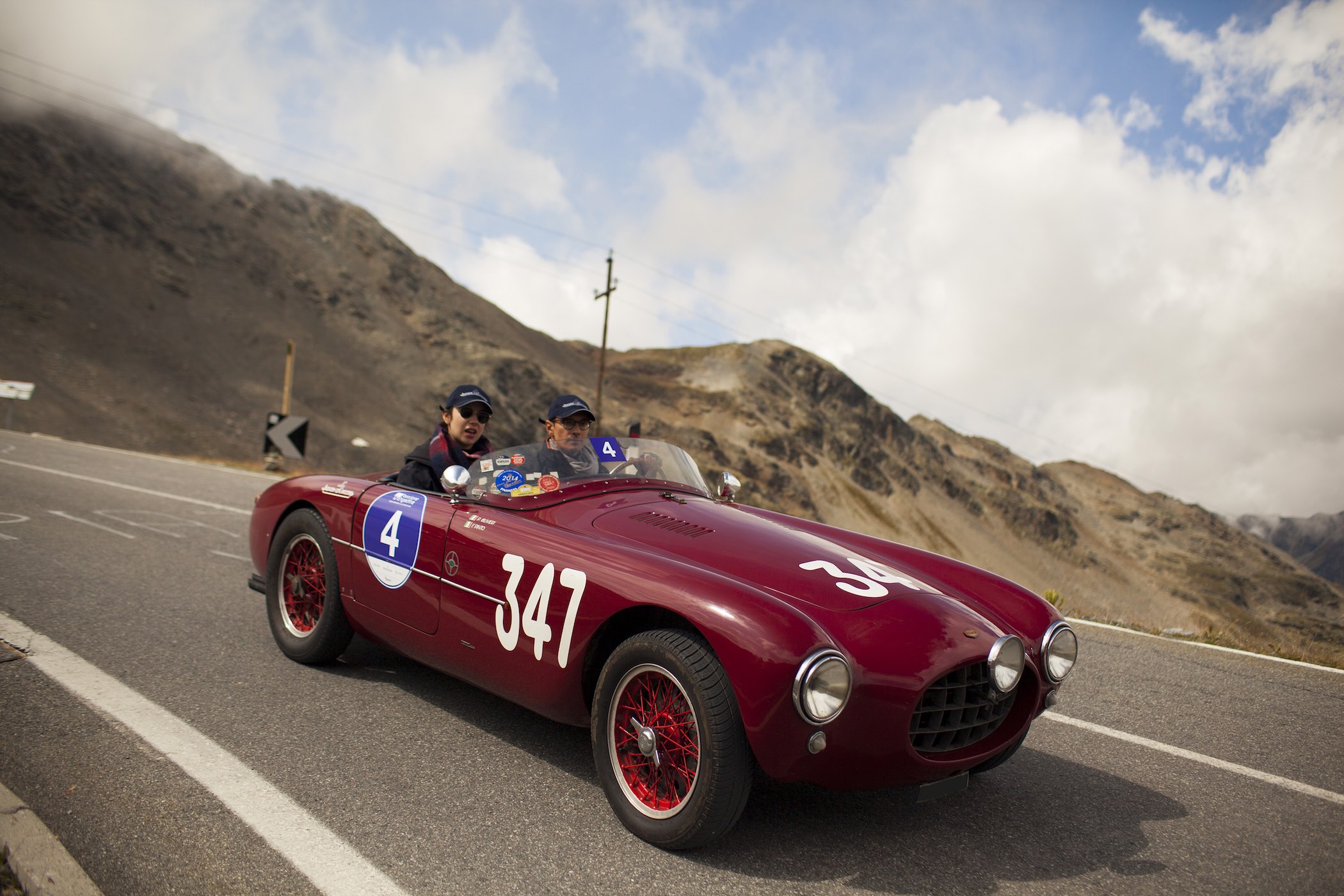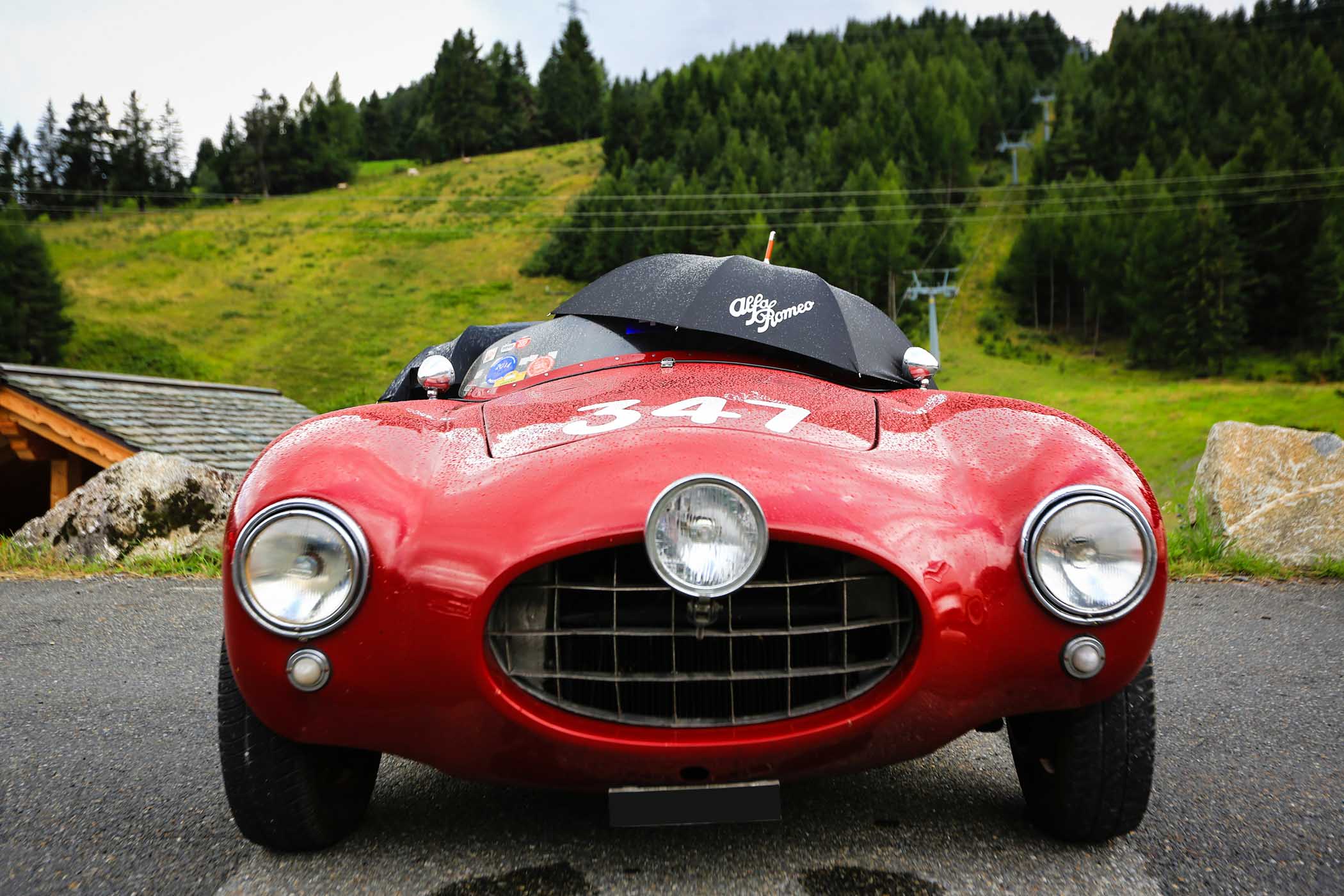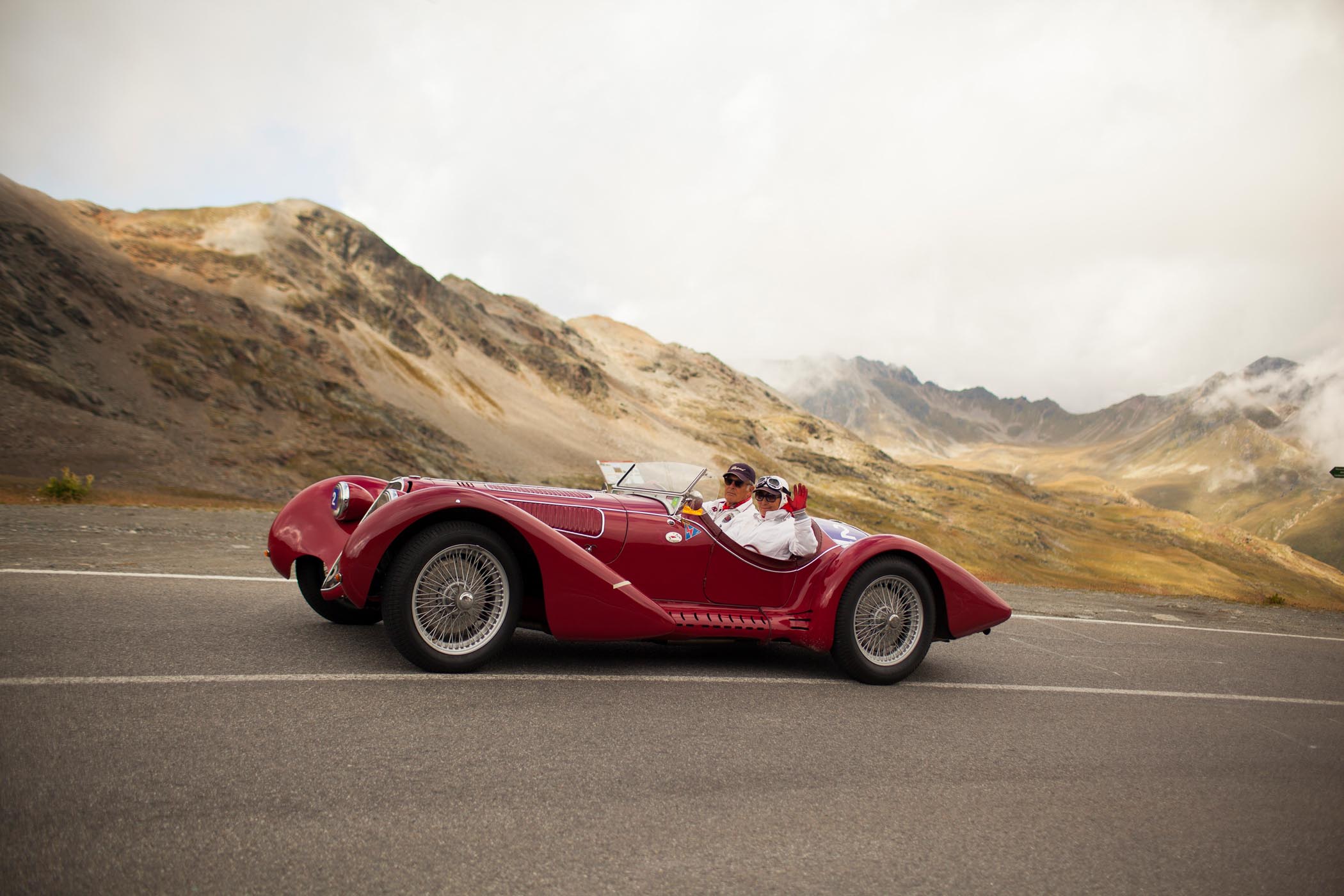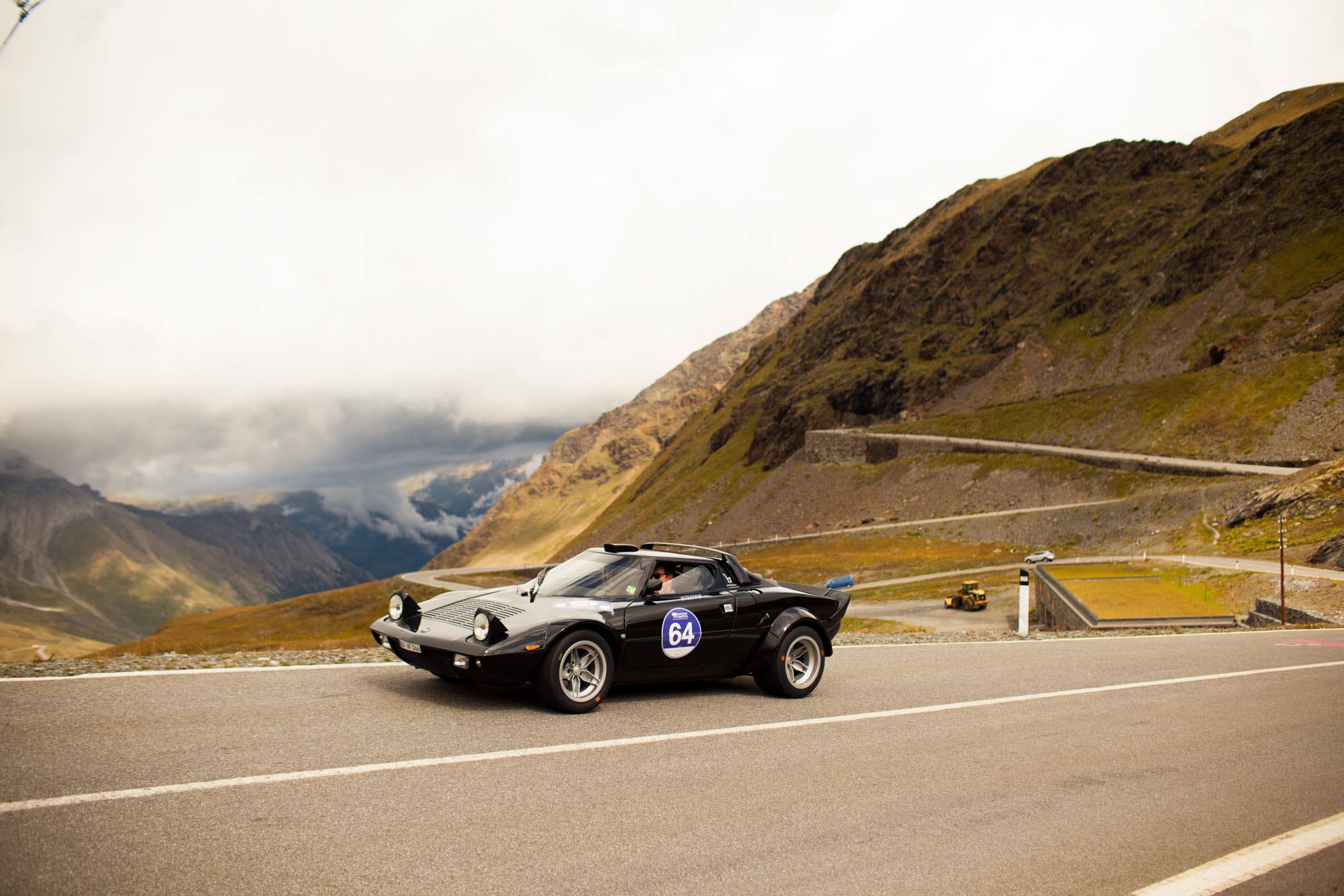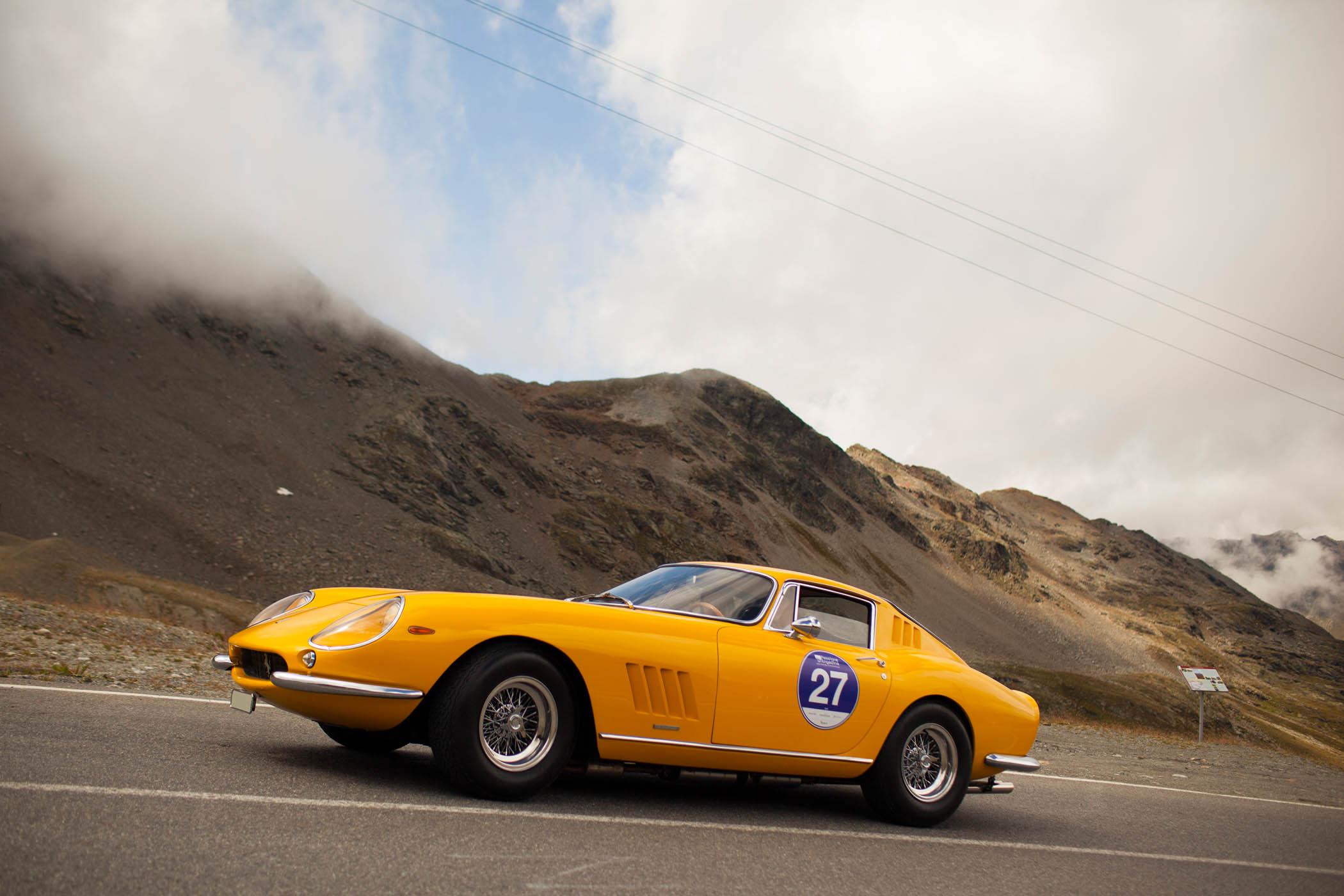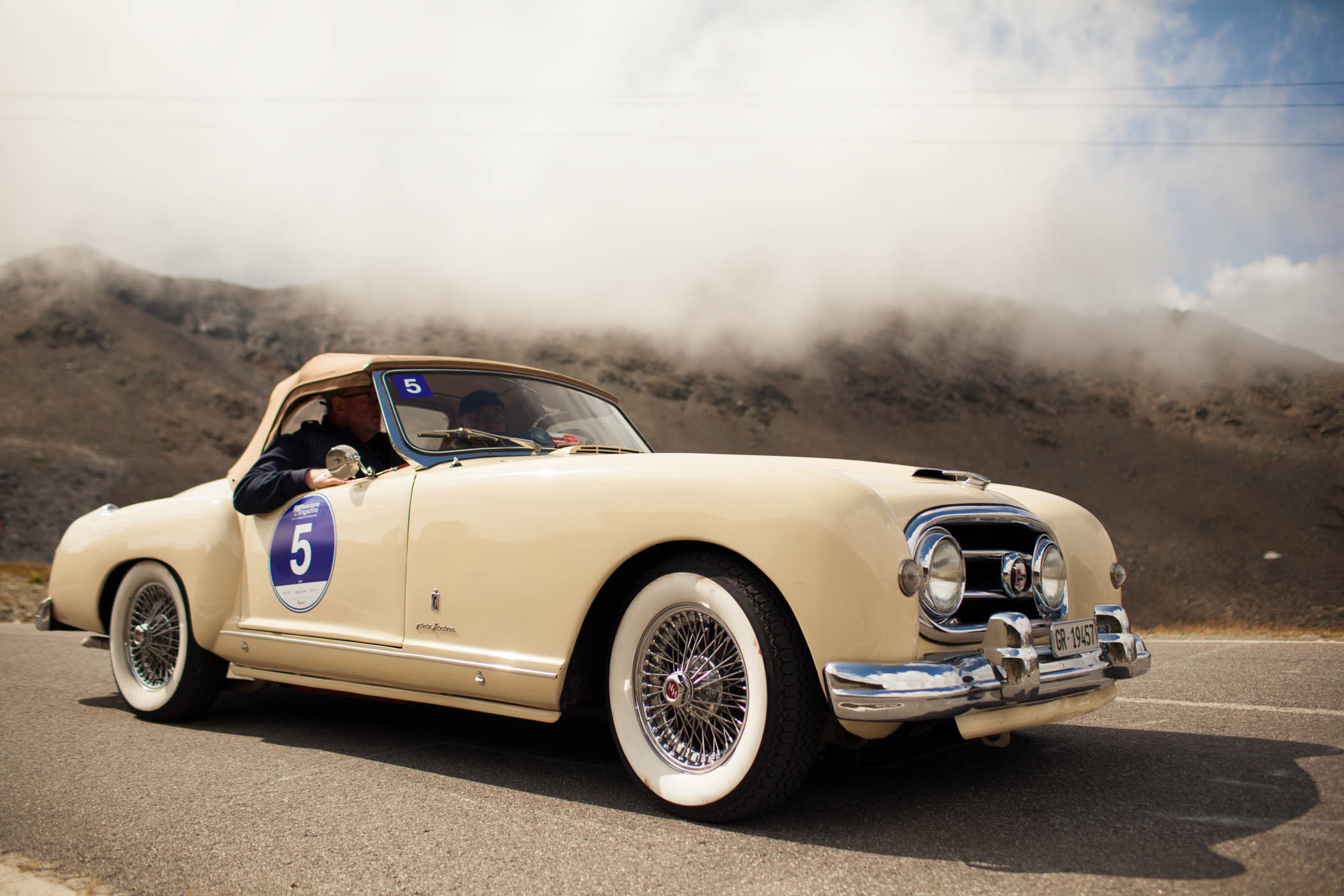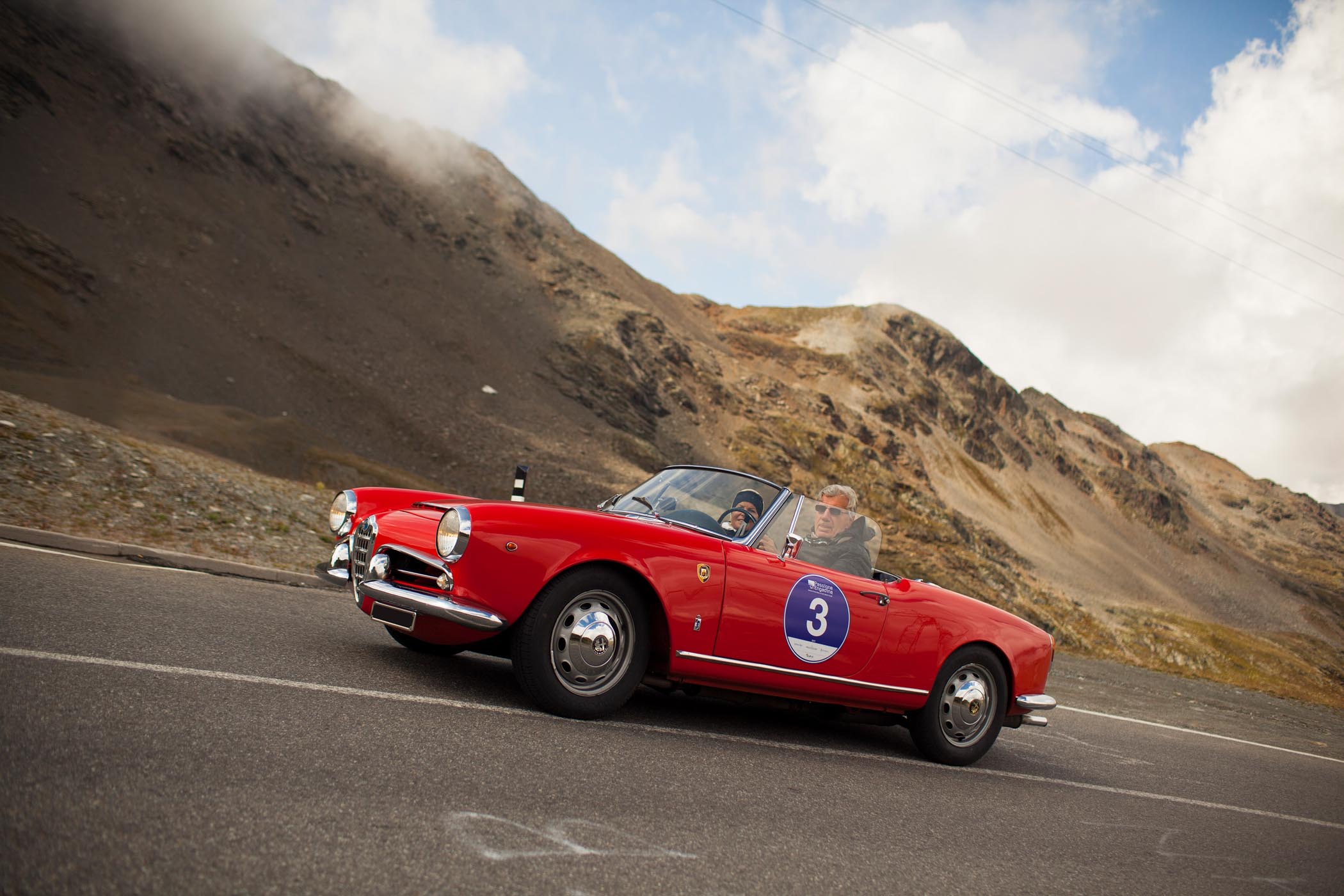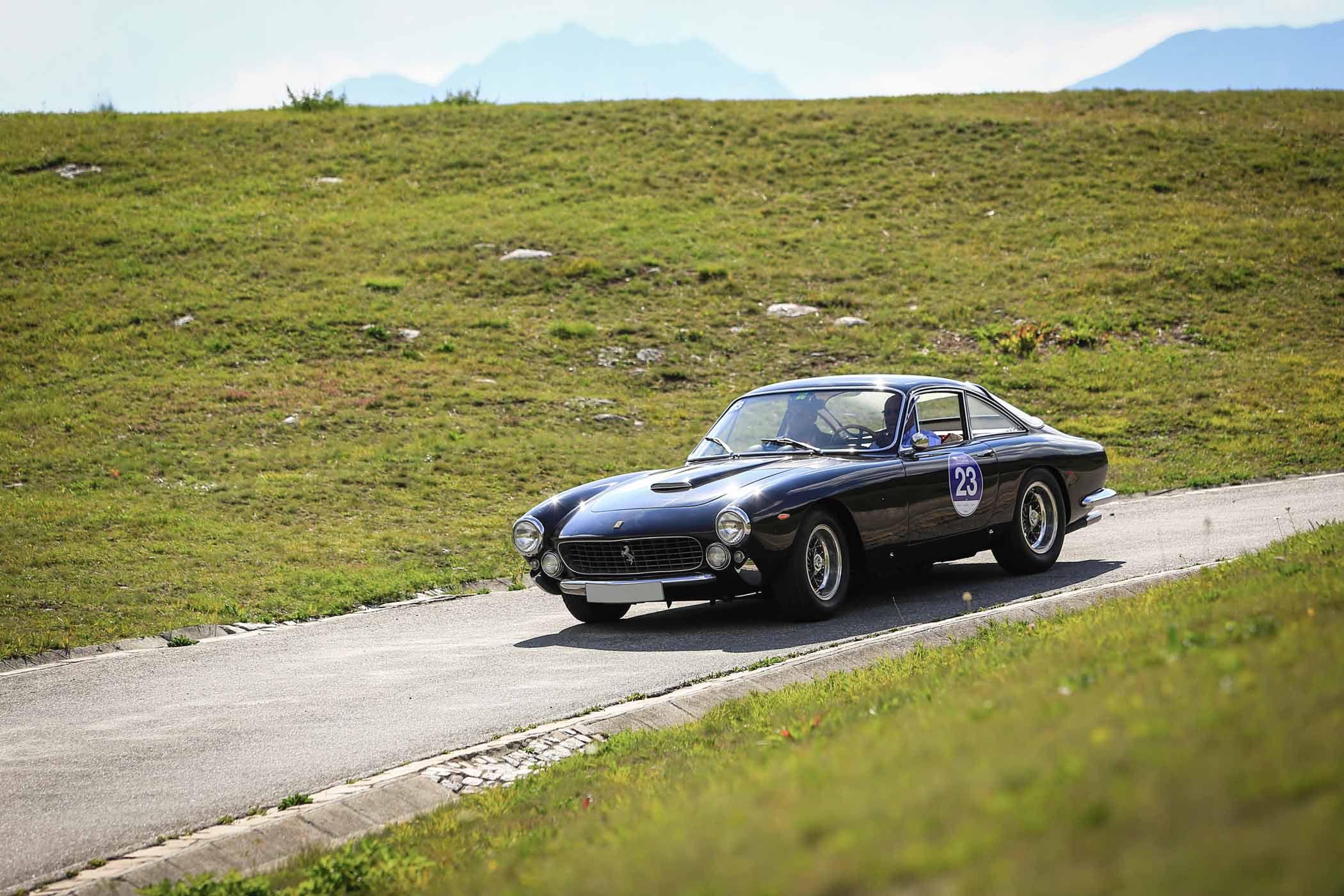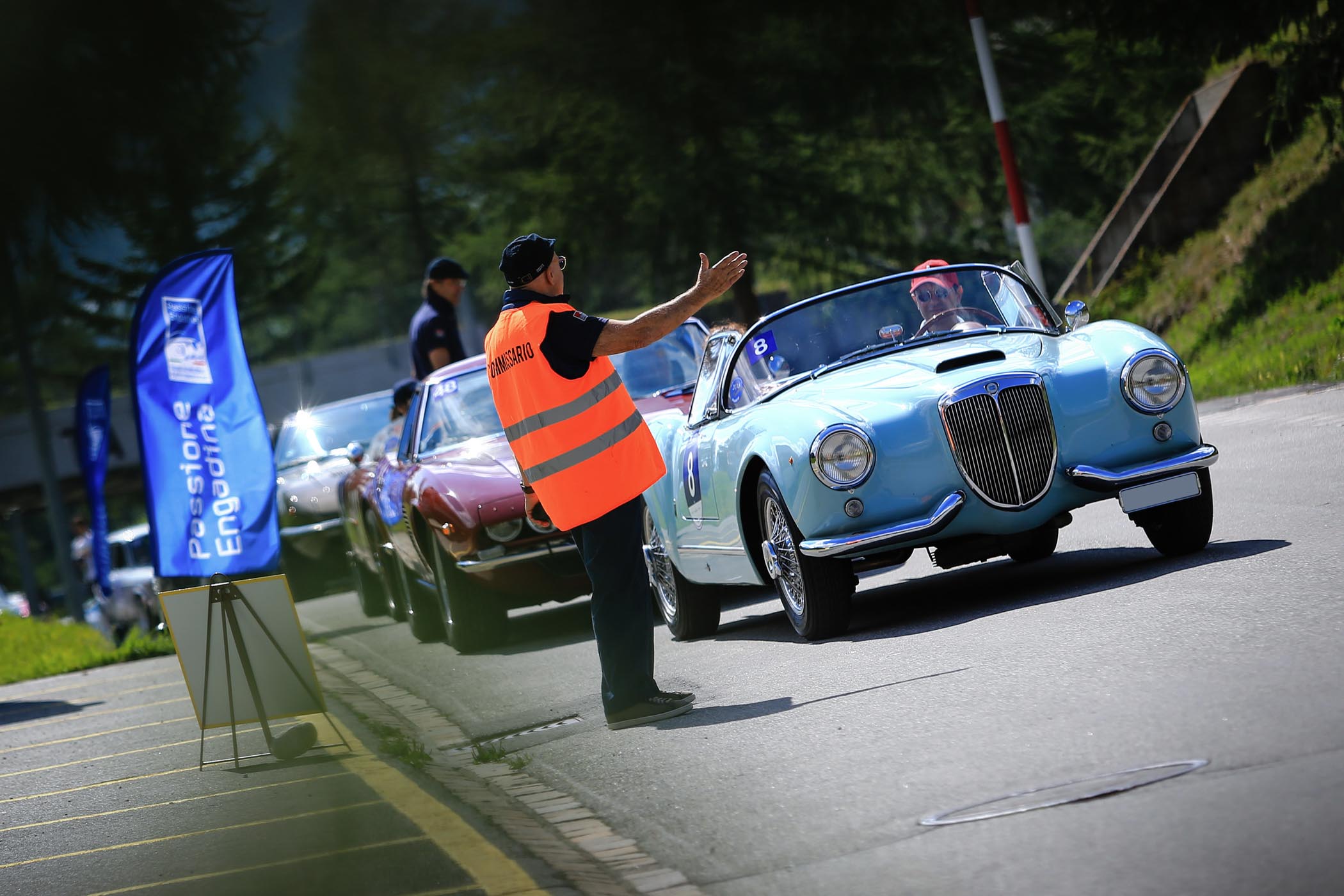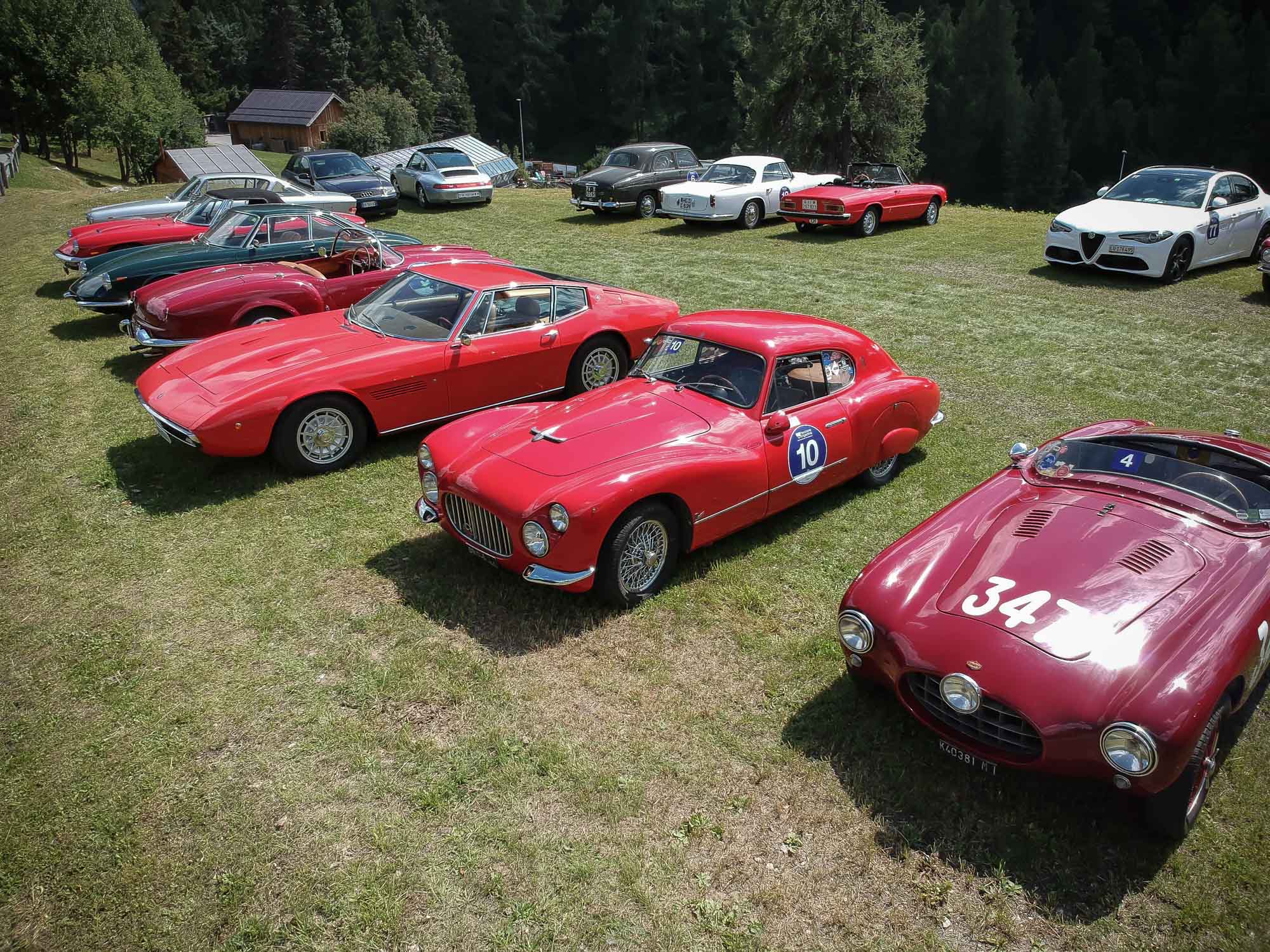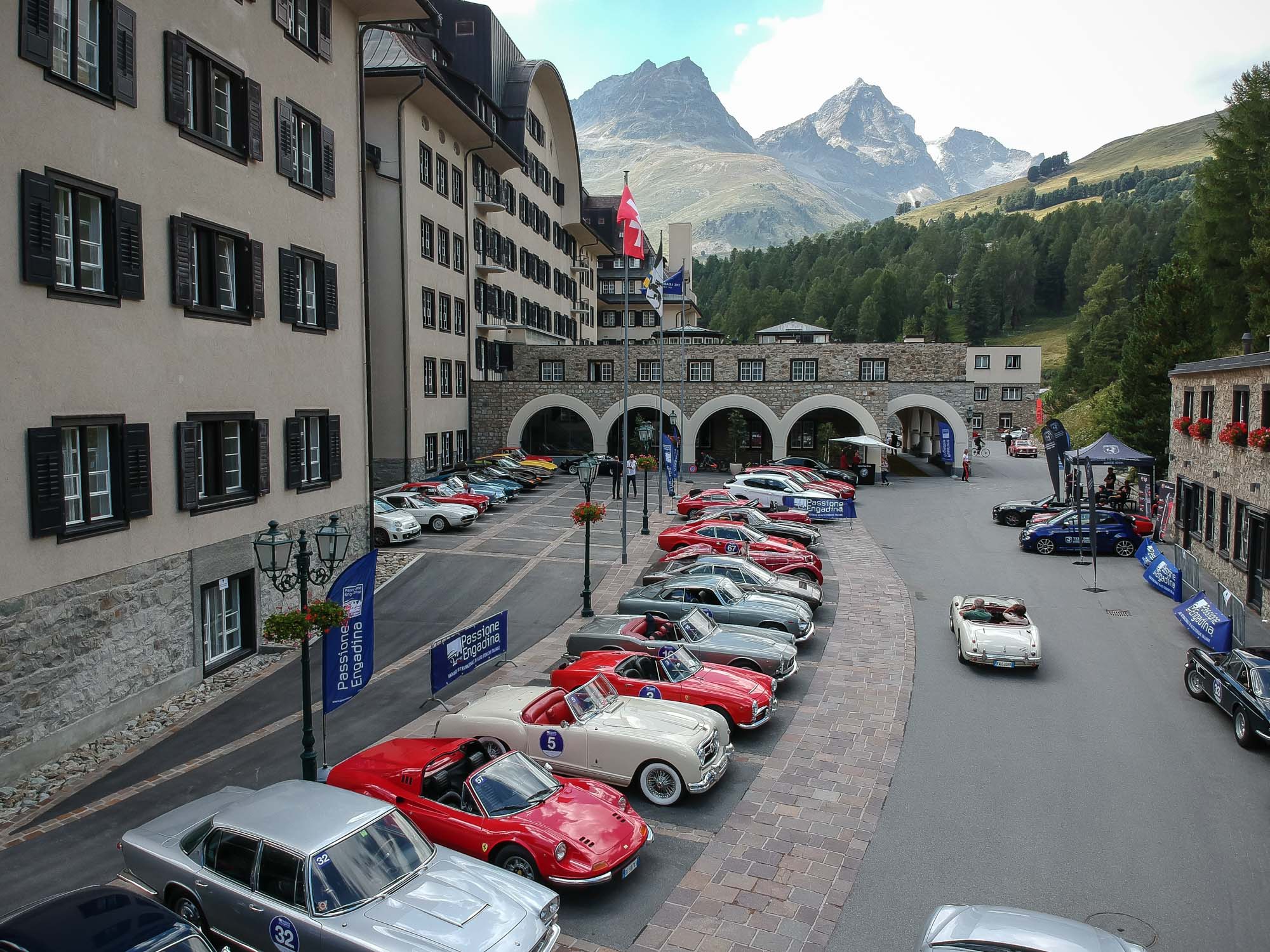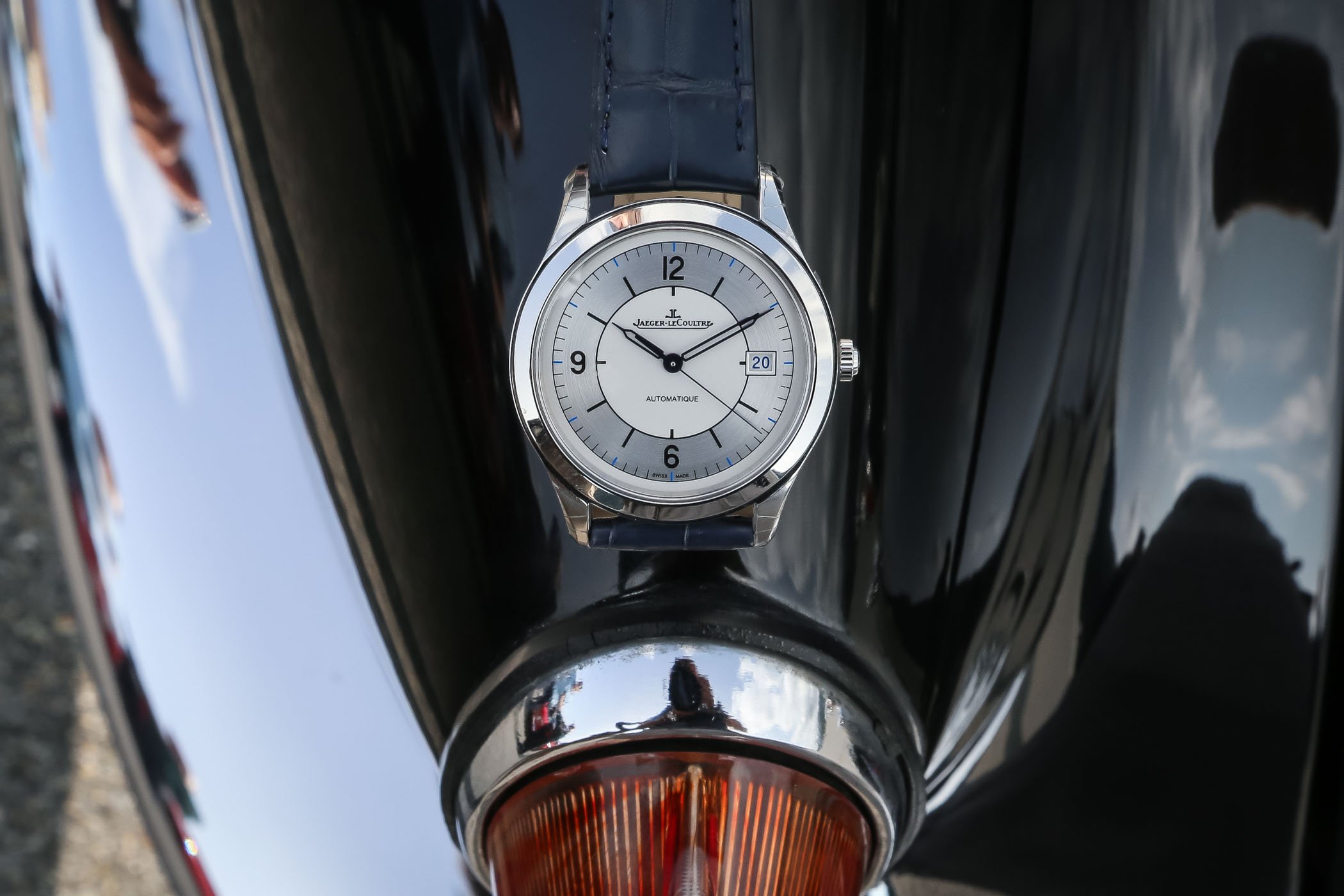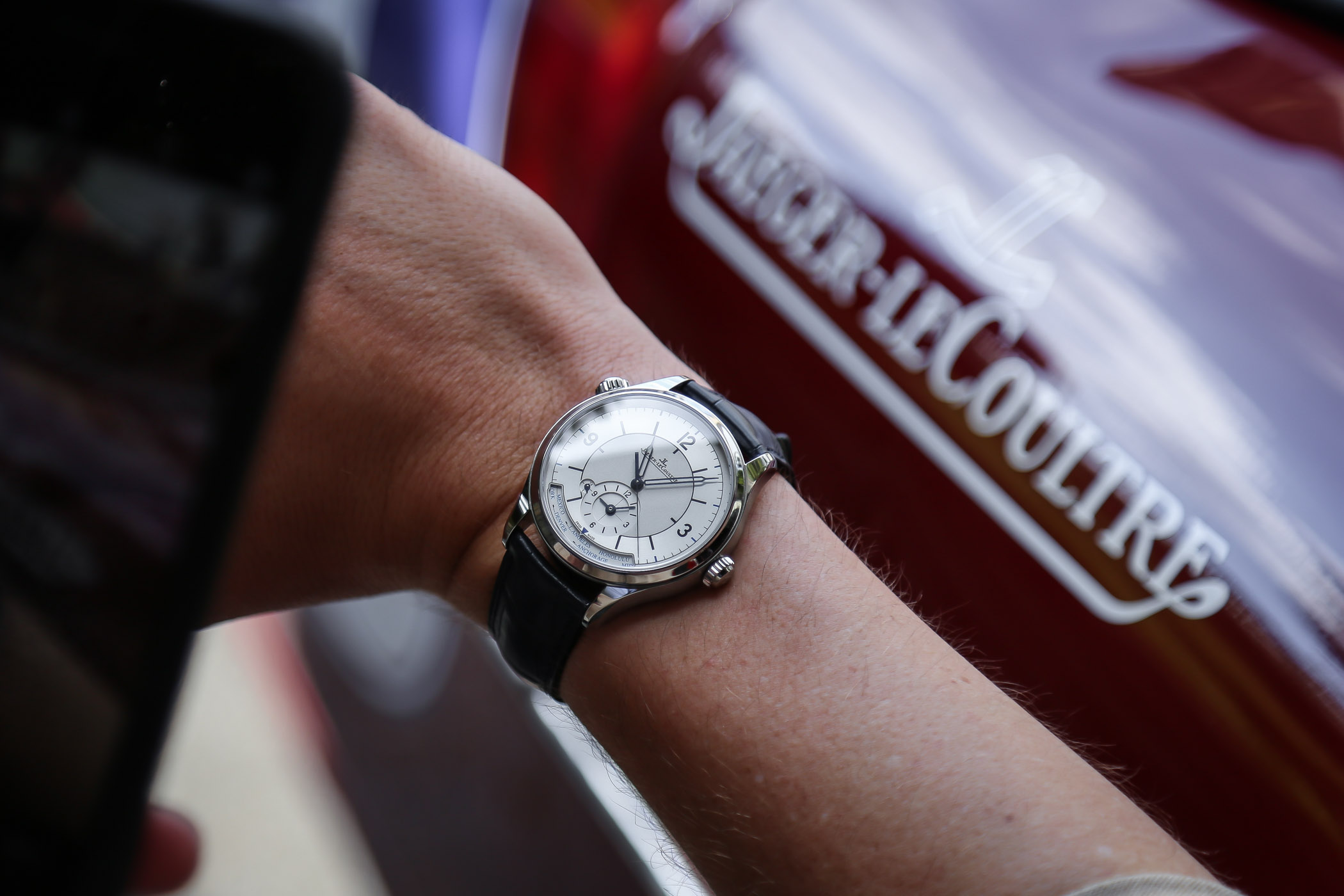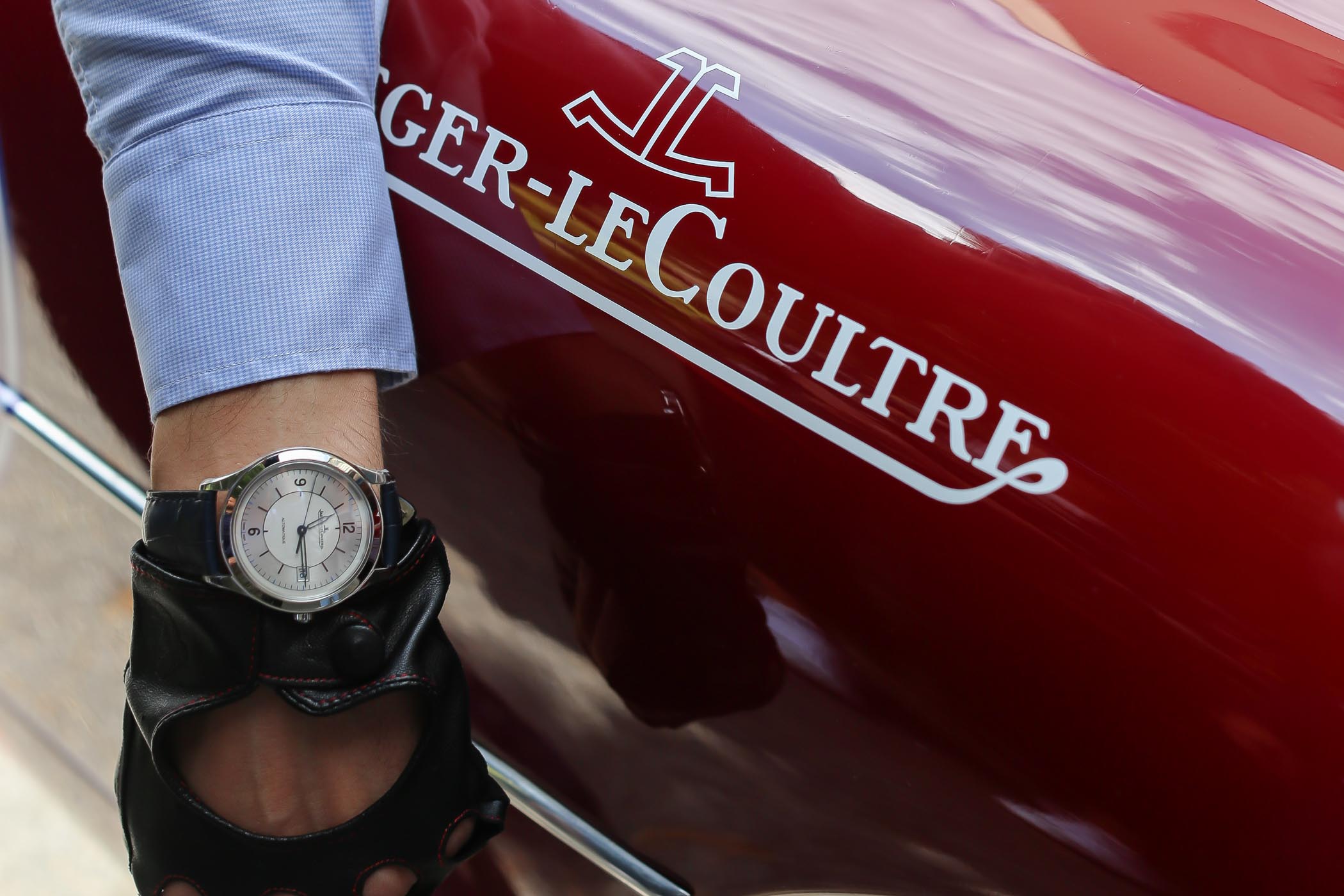Event Report – Classic Car Rally “Passione Engadina” with Jaeger-LeCoultre (and the story behind Jaeger’s Automotive Instruments)

Figure that: the Swiss and Italian Alps, in the middle of August, 7 mountain passes (including the mighty Passo Dello Stelvio), over 70 classic Italian cars, and a roadbook detailing some 250km of mountain roads… This was the program of “Passione Engadina”, a highly coveted classic cars rally, which is, since this year, sponsored by Jaeger-LeCoultre. I had the pleasure of being invited to participate, behind the wheel of a 1952 racing Fiat (an Ermini 1100 Sport), and this is now the occasion for me to bring this report: superb cars, superb roads, superb watches… And it also allows me to bring the story behind Jaeger Automotive Instruments.
The story behind Jaeger’s Automotive Instruments
While many might question the reason why Jaeger-LeCoultre is involved in a classic rally (as the brand is clearly not, at first, related to the automotive world) we first have to go over a slightly forgotten part of the Swiss manufacture’s history. Some of you here might know that the “Grande Maison“, during its 184 years of existence, not only created watches but also Marine clocks, aviation instruments, and – of particular interest today – some dash-mounted instruments for cars – which is to be seen as a raison d’être for the partnership with a classic car rally.
The story behind Jaeger’s Automotive Instruments starts shortly before World War I. In 1907, Swiss manufacture Jaeger started to collaborate with another firm named LeCoultre, as they needed assistance to fulfil multiple contracts to provide movements to several watch brands. Yet, Edmond Jaeger, knowing that a global conflict was coming, had to find a way to survive during those days and expanded his business with yet another type of micro-mechanics. Thus, together with LeCoultre, Jaeger decided to start manufacturing dashboard instruments (counters, dash-clocks or speedometers) for Allies forces’ planes. After the manufacture gained expertise in this field, and once World War I was over, production enlarged to the automotive industry, which by then was in full swing.
Some Jaeger dash-instruments spotted on several cars present at Passione Engadina 2017
Jaeger instruments quickly gained great fame. In 1922, Count Zborowski, an automobile racer who was financing Bamford & Martin, ancestor of Aston Martin, insisted that his own racing car, with which he would participate in the Grand Prix de France, should be equipped with Jaeger instruments. These instruments soon equipped the most important car brands, including Delage, Bugatti, Cadillac, Voisin, Bentley, Delauney-Belleville, Hispano-Suiza, Sunbeam and Singer. A 1927 advertising, shown at Paris Motor Show, even stated that “75% des châssis exposés comportaient des appareils de bord Jaeger, Horloger de la Marine. Tous les châssis grands luxe en étaient équipés” (75% of the cars exposed were equipped with instruments by Jaeger and all the luxurious car were equipped as such).
A Jaeger dash-instrument on a 1939 Alfa Romeo 6c 2500 SS Corsa
The production of Jaeger instruments for cars would continue for way over 50 years, and many of the most famous cars produced were still equipped with Jaeger instruments, known for their precision and reliability. In fact, the production of such dash-counters was seen as an additional source of revenues for Jaeger-LeCoultre – don’t forget that back in the days (not so long ago), onboard instruments were still mechanical, and featured dials and hands, just like the watches produced by JLC.
This forgotten part of Jaeger-LeCoultre’s history is today an interesting justification for partnering with a classic rally (in addition to the fact that it is widely known that car collectors can often be watch collectors too). Even if the current collection doesn’t comprise automotive-inspired watches, the recent “Sector Dial” Master Control range was quite appropriate in this classic car context – and something tells me that we could see more of this inspiration in the coming months…
Classic Cars Rally “Passione Engadina” – cars all around
I’m clearly not going to hide how excited I was when Jaeger-LeCoultre invited us to participate to Passione Engadina 2017 – a classic car rally reserved for Italian cars produced before 1981. Such events are of course part of the pleasure we have to run a magazine such as Monochrome-Watches, yet they are also a very good way to create unique and entertaining content, slightly different from our usual watch reviews. They also allow meeting up with the teams that, on a daily basis, manage these watch manufactures – indeed, it was the right place to sit and talk with JLC’s new Deputy CEO, Geoffroy Lefebvre. Yet, don’t be fooled by this, the main objective of this weekend was about cars… Superb vintage cars!
Yours truly and my co-pilot (who is also my co-pilot in life…), driving a mighty 1952 Fiat Ermini 1100 Sport
My main pleasure when arriving in St Moritz, Switzerland, was to discover the car the organisation had reserved for us… And what a car it was! I was expecting a small 1960s sedan car, and I ended “piloting” a proper race car, which participated the Mille Miglia and the Targa Florio in the early 1950s. If the first half of the rally, consisting of 150km of hill-climbing through the Alps, from St Moritz to the Stelvio Pass, went exceptionally well, the second half of the race has been quite a contrast… Rain, storm, hail, cold, and all of that in a car with no roof and an inefficient windscreen. Let’s agree that there was some proper fight with the wheel, just to make sure that this small “red devil” I was driving (around 100bhp for 500kg) would reach the end line, yet with almost zero visibility… But finally, what a satisfaction it was to reach the final point (and kudos to the JLC team who followed us during the rally and supported us).
No roof… Umbrellas will do the job!
As usual, with the exception of a few events such as the Tour Auto, classic car rallies consist of regularity tests placed along the road… I have to admit that my co-pilot and I failed massively in even getting close to the indicated timings. Clearly, regularity tests are something you have to train yourself to if you want to succeed. Well, the most important thing is to participate…
And for your viewing pleasure, here’s a selection of some of the cars that were engaged in Passione Engadina 2017… Dozens of vintage Ferraris, Alfa Romeos, Lancias and Fiats pushed quite hard on roads where brakes are crucial – and of course, most of these cars, including ours, have almost no brakes (part of the fun…)
And some of the cars engaged by Jaeger-LeCoultre, including one driven by our friends of Watchonista (No. 10).
The Jaeger-LeCoultre Master Control “Sector Dial”
Being invited by Jaeger-LeCoultre, this event was also the perfect moment for me to take a closer look at some of the new watches that the brand introduced at the SIHH 2017 – the star of the show being, of course, the Master Control “Sector Dial” collection. I first saw these watches during the Geneva fair, however too quickly to properly test them and to have a decent touch-and-feel experience. While at that time I already had a positive opinion about the design, I was not sure about the result on the wrist – which was mainly explained by the fact that I was not able to strap these three models for more than 2 minutes each. My presence at “Passione Engadina” allowed me to wear the Date and Chronograph versions, each for one full day.
As said, I had no doubt about the look of this Master Control “Sector Dial” collection. They all look superb – my only reservation might be about the blue alligator strap, which I found a bit too classic. While the cases and movements are perfectly known and have been widely used by Jaeger-LeCoultre, the main novelty was about the dial. Vintage inspired, yet not copying antique models, it is balanced, well finished and with plenty of pleasant details (two-tone style, with a matte central part and brushed hour ring, discreet bright blue indexes bringing some funkiness, nice blued hands with skeletonized shape). There certainly is a general consensus about the look of these 3 watches… which is justified.
Jaeger-LeCoultre also had the right idea to simplify the display of these watches. For instance, the chronograph enhanced its vintage look by only displaying 2 sub-counters (and not 3 sub-counters and a date), while the Geographic model gets rid of the date counter and the power reserve indicator, to only focus on the world-time indication. These subtle changes, linked to the well proportioned radiating hour markers and Arabic numerals, create some lively watches, with the right dosage of hype (because sector dials are clearly hot these days…)
My main surprise when playing with these Master Control “Sector Dial” was on something else. I had a rather disappointing opinion at the SIHH 2017 when strapping these watches, especially about the quality of the cases that I felt light and not perfectly adjusted – note: these were probably prototypes quickly assembled before the show. My time with these watches on the wrist this past weekend was enough to understand that my opinion was wrong and the overall quality is, of course, on par with what you can expect from Jaeger-LeCoultre – precise, well-adjusted, well finished. All three watches feature automatic movements, manufactured in-house by JLC – and all 3 are pleasant to use on a daily basis, particularly the chronograph that offers a smooth and precise start of the timing function.
- Jaeger-LeCoultre Master Control Date “Sector Dial” – 39mm x 8.5mm steel case, automatic calibre 899/1, blue alligator strap – 5,950 Euro
- Jaeger-LeCoultre Master Chronograph “Sector Dial” – 40mm x 12.1mm steel case, automatic calibre 751G, blue alligator strap – 8,300 Euro
- Jaeger-LeCoultre Master Geographic “Sector Dial” – 39mm x 11.77mm steel case, automatic calibre 939B/1, blue alligator strap – 9,800 Euro
More details about Jaeger-LeCoultre on their official website – more details about Passione Engadina rally on their official website.
Photo credits: Guillaume Cassez/Jaeger-LeCoultre for Monochrome-Watches (watches and Jaeger counters) – Passione Engadina (cars and views of the rally)


